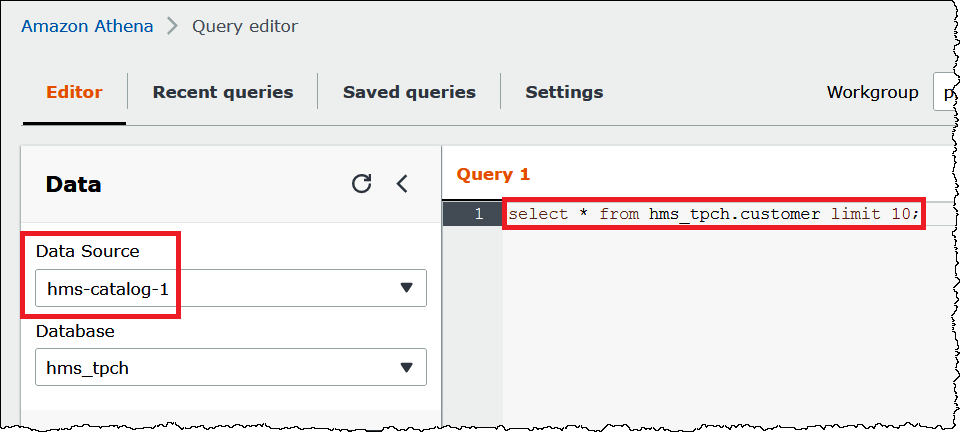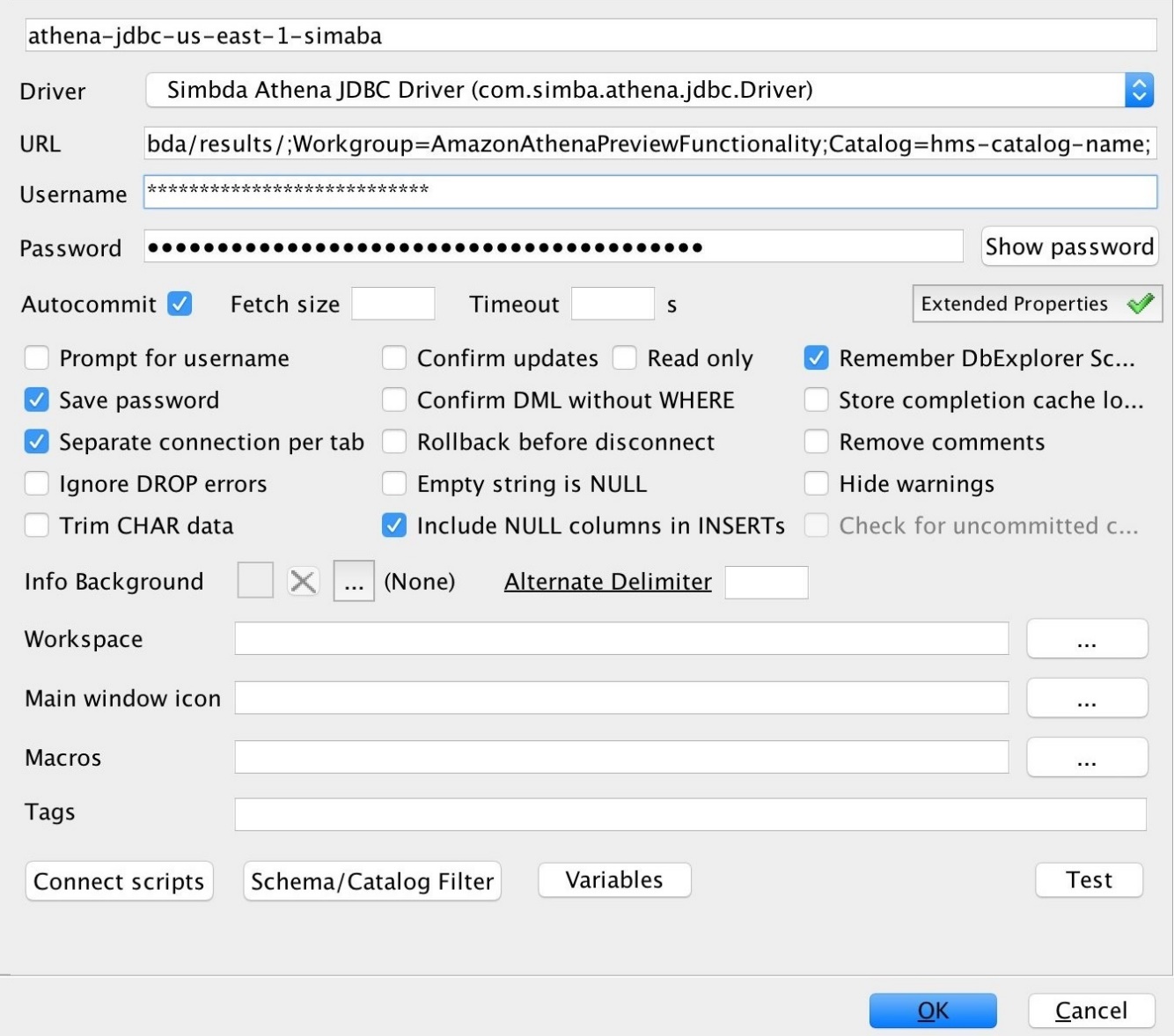Omit the catalog name in external Hive metastore queries
When you run DML and DDL queries on external Hive metastores, you can simplify your query syntax by omitting the catalog name if that name is selected in the query editor. Certain restrictions apply to this functionality.
DML statements
To run queries with registered catalogs
-
You can put the data source name before the database using the syntax
[[, as in the following example.data_source_name].database_name].table_nameselect * from "hms-catalog-1".hms_tpch.customer limit 10; -
When the data source that you want to use is already selected in the query editor, you can omit the name from the query, as in the following example.
select * from hms_tpch.customer limit 10:
-
When you use multiple data sources in a query, you can omit only the default data source name, and must specify the full name for any non-default data sources.
For example, suppose
AwsDataCatalogis selected as the default data source in the query editor. TheFROMstatement in the following query excerpt fully qualifies the first two data source names but omits the name for the third data source because it is in the Amazon Glue data catalog.... FROM ehms01.hms_tpch.customer, "hms-catalog-1".hms_tpch.orders, hms_tpch.lineitem ...
DDL statements
The following Athena DDL statements support catalog name prefixes. Catalog name prefixes in other DDL statements cause syntax errors.
SHOW TABLES [IN [catalog_name.]database_name] ['regular_expression'] SHOW TBLPROPERTIES [[catalog_name.]database_name.]table_name [('property_name')] SHOW COLUMNS IN [[catalog_name.]database_name.]table_name SHOW PARTITIONS [[catalog_name.]database_name.]table_name SHOW CREATE TABLE [[catalog_name.][database_name.]table_name DESCRIBE [EXTENDED | FORMATTED] [[catalog_name.][database_name.]table_name [PARTITION partition_spec] [col_name ( [.field_name] | [.'$elem$'] | [.'$key$'] | [.'$value$'] )]
As with DML statements, you can omit the datasource and database prefixes from the query when the data source and database are selected in the query editor.
In the following image, the hms-catalog-1 data source and the
hms_tpch database are selected in the query editor. The show
create table customer statement succeeds even though the
hms-catalog-1 prefix and the hms_tpch database name are
omitted from the query itself.

Specifying a default data source in a JDBC connection string
When you use the Athena JDBC Driver to connect Athena to an external Hive metastore, you can
use the Catalog parameter to specify the default data source name in your
connection string in a SQL editor like SQL workbench
Note
To download the latest Athena JDBC drivers, see Using
Athena with the JDBC driver
The following connection string specifies the default data source
hms-catalog-name.
jdbc:awsathena://AwsRegion=us-east-1;S3OutputLocation=s3://amzn-s3-demo-bucket/lambda/results/;Workgroup=AmazonAthenaPreviewFunctionality;Catalog=hms-catalog-name;
The following image shows a sample JDBC connection URL as configured in SQL Workbench.
